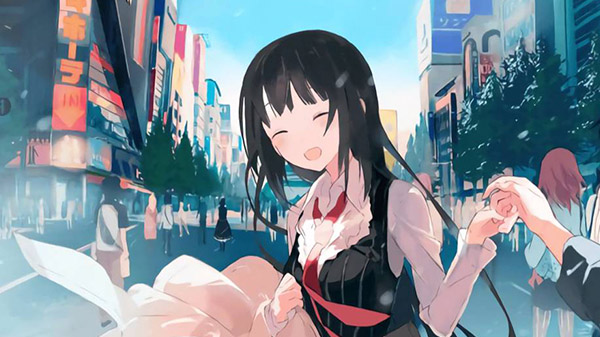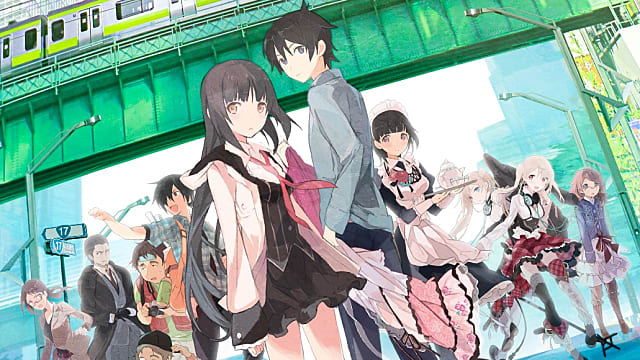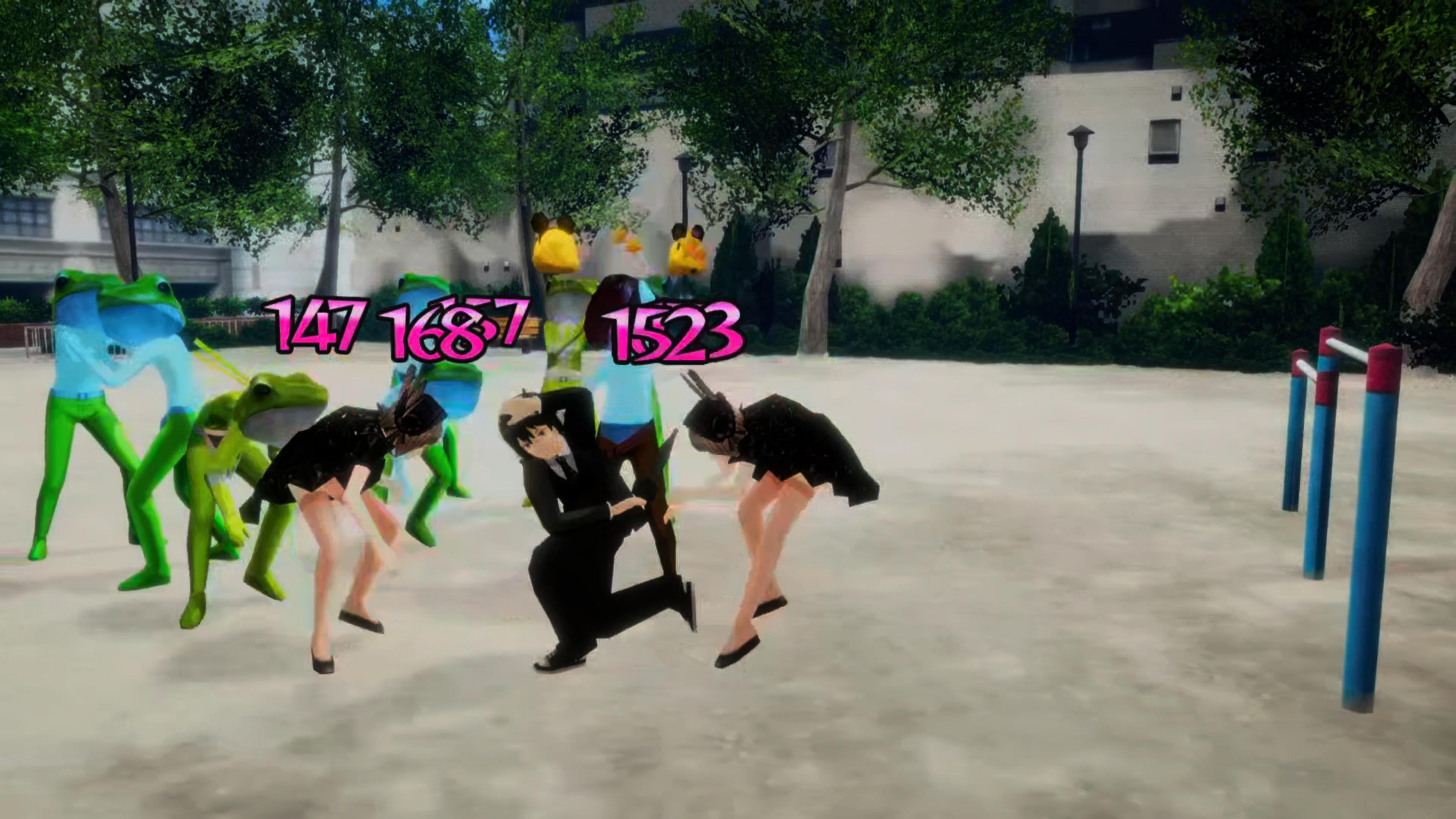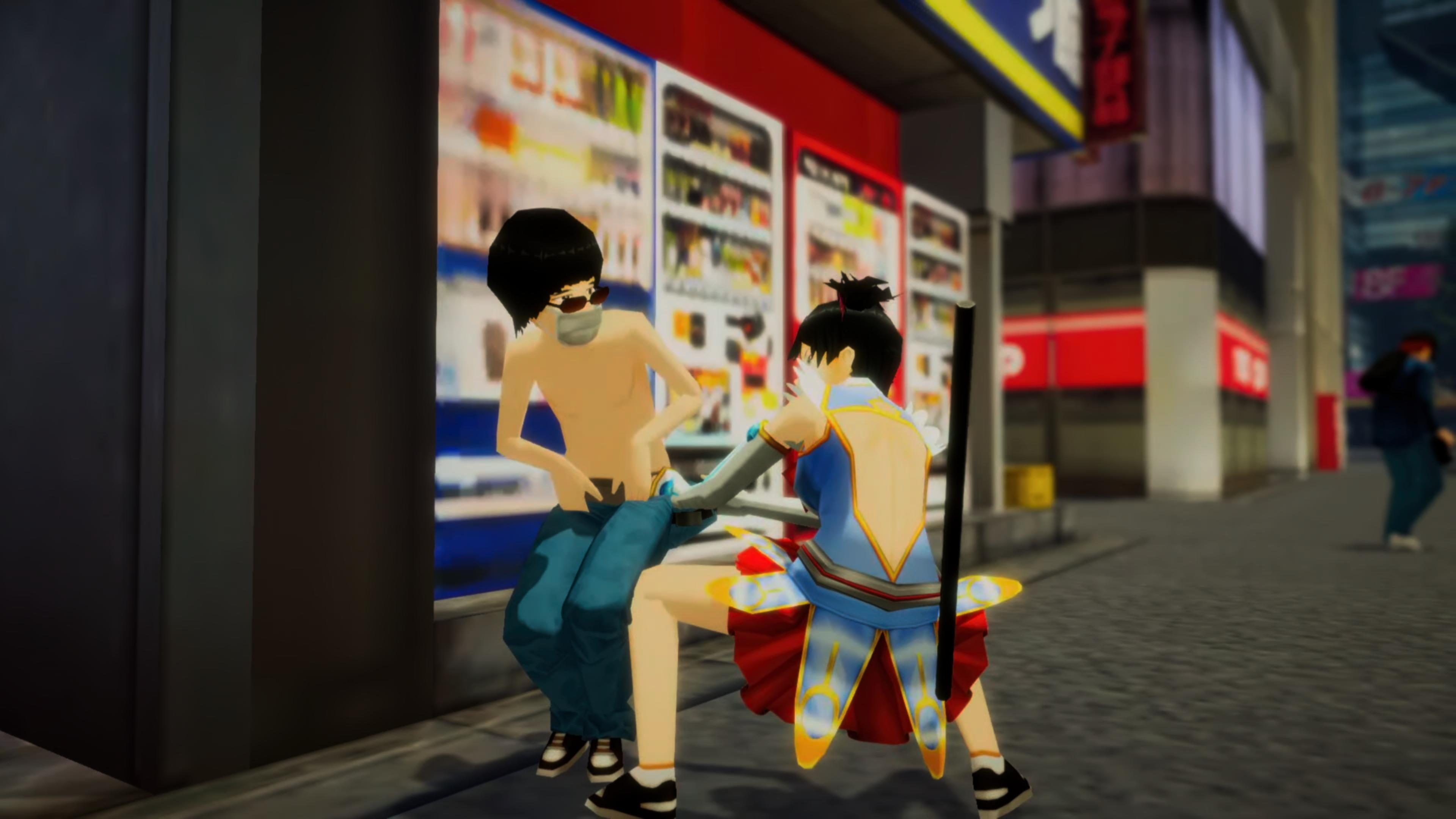The Akiba’s Trip series is such a unique one. When Akiba’s Trip: Undead & Undressed came westward in 2014, I had no idea what to expect. It turned out to be a very shameless beat ’em game with stripping mechanics. More specifically, the main character explores the city of Akihabara and strips the clothes off of supernatural human enemies called Synthesizers, who are vulnerable to sunlight.
Akiba’s Trip: Hellbound & Debriefed essentially uses the same concept but with a different group of enemies. Debriefed is a remaster of the first game in the series that originally launched on the PlayStation Portable back in 2011, though it never made it outside of Japan.
Akiba’s Trip: Hellbound & Debriefed Review — A Shadow of Its Former Self
This time around, the enemies are vampiric entities called Shadow Souls. These nefarious beings feed on the citizens of Akihabara, draining their souls and turning them into antisocial shut-ins. The main character, Tanaka, gets attacked at the very beginning of the game, and a mysterious girl saves them by utilizing her own bodily fluids to heal their wounds.
This grants Tanaka supernatural powers, but at the cost of being vulnerable to sunlight just like the other Shadow Souls. Tanaka then joins NIRO to take down the remaining Shadow Souls to uncover their ultimate plan.
Those who’ve played Undead & Undressed (U&U) back in 2014 will certainly find themselves in familiar territory. While I’d say they’ll also enjoy Hellbound & Debriefed (H&D), it’s lacking in all of the many quality of life and gameplay improvements that U&U introduced seven years ago.
It’s almost as if the game was ported from PlayStation Portable onto modern platforms, but then nothing else was done to make it feel modern.
The lack of a lock-on system or any sort of manual targeting is an issue in U&U, and in H&D, the problem still hasn’t been solved. Combat feels as cumbersome as ever, with inconsistent, all-over-the-place hit detection.
In fact, gameplay has seemingly regressed here.
You can hit your enemies in three areas: high, mid, and low, each corresponding to pieces of clothing, which are headwear, shirt, and pants, respectively. As you continue to hit your enemies, their clothing turns a different color, indicating that you can try and strip a particular piece of clothing off of them.
In U&U, you can try to strip off an enemy’s clothes by mashing a specific button. If you are unsuccessful, your efforts still contribute to lowering your target’s clothing HP meter. However, in H&D, that HP meter doesn’t go down at all, which effectively means that if you fail to strip an enemy’s clothing, your effort goes to waste. Furthermore, in U&U, you can see how much HP your clothing has. But that feature is completely gone in H&D, so it’s harder to gauge your own condition.
By putting away your weapon and adjusting your clothes, these two animations allow you to recover your HP. But it’s a laborious process, as the animation leaves you wide open to enemy attacks. U&U does the exact same thing, except without having to put away a weapon, cutting the animation time in half.
The gameplay isn’t the only thing that’s gone backward here. U&U lets you open the Akihabara map at any time and go to a different location. In H&D, you have to actually run to the edge of the area to open up the map menu. Additionally, you can only save or change your clothes and equipment when the map is open, removing the change-at-any-time option found in U&U.
There are side quests in Hellbound & Debriefed as well, and they help expand Akihabara’s worldbuilding. These are the usual fare, with you fighting enemies or fetching some sort of item. You can always pull up the To-Do list in your menu to read what’s next in the main story or a side quest, but one aspect that is notably missing is an objective tracker. At this point, you can probably figure out that U&U had one…
It’s just baffling to see how many quality-of-life functions are missing here. In 2021, we’ve seen many remasters improve on their forebears, such as Nier Replicant and Shin Megami Tensei 3 HD Remaster. Unfortunately, Akiba’s Trip: Hellbound & Debriefed hasn’t overhauled combat — like the former — nor does it have an already solid combat foundation — like the latter.

But that’s not to say there aren’t any positives to this game.
XSEED usually provides quality localization, and H&D is no exception. The English voice acting is great, and it’s a noticeable step up from Undead & Undressed. The cast of characters is charming too, with my favorite being the main heroine, Rui Fumitsuki. XSEED’s stellar script really helps bring the main and supporting casts to life.
While the game’s 3D graphics are kind of ugly, I do really love the crisp 2D art style of the character portraits and special CG artwork that comes with the different endings. The music can be pretty good as well, particularly the battle themes.
Akiba’s Trip: Hellbound & Debriefed — The Bottom Line

Pros
- Top-notch localization and English voice dub from XSEED
- 2D art style and CG wallpaper artwork is crisp and clean
- Music can be pretty good
Cons
- Gameplay is entirely too cumbersome
- Lacking any gameplay or quality of life functions that were introduced in its 2014 sequel
- Graphics look ugly on the big screen
I can really only recommend Akiba’s Trip: Hellbound & Debriefed to diehard fans of the series. It doesn’t have any gameplay or quality-of-life improvements that its 2014 sequel introduced, and as a result, it feels like a relic of the past.
While there are some emotional moments in the game’s story and the cast of characters can be fun, the gameplay is a chore to get through. It’s just disappointing that this is such a barebones remaster.
[Note: XSEED provided the copy of Akiba’s Trip: Hellbound & Debriefed used for this review.]









Published: Jul 18, 2021 12:39 am